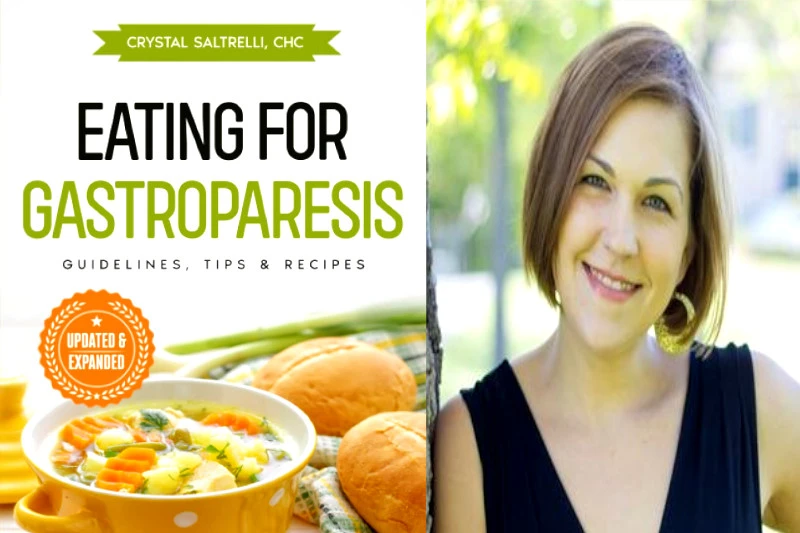How long does it take for Tylenol to Work? Its 20 to 30 Minutes
There are so many queries from our readers asking how long it takes for Tylenol to work. We will explore more about Tylenol in the article while answering the question. It is useful to have Tylenol at home as a quick home remedy for certain ailments.
The name Tylenol is a widely known brand name in the United States. The drug is used as a pain reliever and a fever reducer.
Look at the recent statistics. Tylenol is used by people in the United States in staggering numbers. Each year, it accounts for 8 billion pills. Tylenol is taken orally as tablets or capsules.
- What is Tylenol and Its Uses?
- What is in Tylenol?
- Tylenol Dosage and Safe Use
- Safe Use of Tylenol
- How Long Does It Take for Tylenol to Work?
- Is Tylenol Completely Safe? What If in Case of Overdone?
- How safe is Tylenol for pregnant and breastfeeding women?
- Tylenol Side Effects and Overdose Symptoms
- Warnings
- Takeaway
What is Tylenol and Its Uses?
The drug Tylenol (acetaminophen) is primarily used for pain relief and fever reduction. Its uses in treating health conditions include:
- Flu and fevers
- Headache
- Muscle aches
- Arthritis
- Backache
- Toothaches
- Sore throats
- Colds
- Menstrual cramps
One of the most popular brands of acetaminophen is Tylenol. The United States uses the term acetaminophen. The medication is known as paracetamol or APAP in other parts of the world. Some of the other popular acetaminophen drugs are Panadol, Actifed, Sudafed, and Robitussin.
This medicine can be obtained over the counter without a doctor’s prescription. A wide variety of forms of this medicine is available, including:
- Tablet, Extended Release (the pill is formulated so that the drug is released slowly over time)
- Tablet, Disintegrating (orally dissolving tablet)
- Tablet, Chewable
- Capsule
- Capsule, Liquid Filled
- Powder
- Solution
- Suppository
- Suspension
What is in Tylenol?
Among the many ingredients in Tylenol, one is its main active ingredient.
Active Ingredient: The main and active ingredient in Tylenol is Acetaminophen.
Other Ingredients in Tylenol are:
- Powdered Cellulose
- Pregelatinized Starch
- Polyethylene Glycol
- Sodium Starch Glycolate
- Titanium dioxide
- Purified Water
- Magnesium Stearate
Chemical and Physical Properties of Tylenol: Acetaminophen is the main component of Tylenol. The molecular formula of this compound is C8H9NO2. It has a molar mass of 151.163 g/mol. The temperature at which it melts is about 169°C. The drug is soluble in water and alcohol.
Tylenol has a wide range of products for adults, children, and infants. It also includes products based on the treatments needed for the conditions such as:

Tylenol Dosage and Safe Use
Here is the dosage chart of Tylenol for adults:
| Tylenol Drug | Dosage | Caution |
|---|---|---|
| Regular-strength Tylenol tablets | 2 Tablets Every 4-6 hours while symptoms last | Not to exceed 10 tablets in 24 hours, unless directed by a doctor |
| Regular-length strength liquid gels | 2 Capsules Every 4-6 hours while symptoms last | Not to exceed 10 capsules in 24 hours, unless directed by a doctor |
| Extra strength Tylenol | 2 Caplets Every 6 hours while symptoms last | Not to exceed 6 caplets in 24 hours, unless directed by a doctor |
| Tylenol coated tablets | 2 Tablets Every 6 hours while symptoms last | Not to exceed 6 tablets in 24 hours, unless directed by a doctor |
| Tylenol rapid-release gels | 2 Gelcaps Every 6 hours while symptoms last | Not to exceed 6 gelcaps in 24 hours, unless directed by a doctor |
| Tylenol 8 HR arthritis pain | 2 Caplets Every 8 hours while symptoms last | Not to exceed 6 caplets in 24 hours |
| Tylenol 8 HR Muscle aches & pain | 2 Caplets Every 8 hours while symptoms last | Not to exceed 6 caplets in 24 hours |
| Tylenol dissolve packs | 2 Powders Every 6 hours while symptoms last | Not to exceed 6 powders in 24 hours |
Safe Use of Tylenol
Any product containing acetaminophen should be taken with the following precautions for safe use:
- Make sure you read the label and follow the instructions
- Understand how much to take
- how frequently to take it and when to stop
- Maintain an accurate record of your intake and when you took it
- Do not take more than one acetaminophen product at the same time
- Be aware of the daily maximum dose (Doses differ between adults and children and for those younger than 12 years).
An estimated 50 million Americans use acetaminophen each week to treat conditions such as pain, fever and aches and pains associated with cold and flu symptoms. To help encourage the safe use of acetaminophen, the makers of TYLENOL® have lowered the maximum daily dose for single-ingredient Extra Strength TYLENOL® (acetaminophen) products sold in the U.S. from 8 pills per day (4,000 mg) to 6 pills per day (3,000 mg). The dosing interval has also changed from 2 pills every 4 – 6 hours to 2 pills every 6 hours.
Recommended Dosage by Tylenol Company
How Long Does It Take for Tylenol to Work?
Depending on the state of the person’s body and health, this can vary slightly. Also, for Tylenol to work, it must dissolve in the stomach first. Then be absorbed into the bloodstream. Once in the bloodstream, it reaches the brain. At this point only, acetaminophen begins to take effect. It starts to block all pain signals and reduce fever as a result.
The time taken by Tylenol to work varies depending on whether you are on an empty stomach or after you have eaten.
Tylenol takes effect within 15 to 20 minutes when taken on an empty stomach. When you take Tylenol after eating, it will take about an hour for it to kick in. Tylenol reaches its peak of effectiveness between 2 and 4 hours after taking it. Compared to adults, Tylenol starts to work faster in children.
Is Tylenol Completely Safe? What If in Case of Overdone?
As long as the correct dosage is maintained, Tylenol is completely safe.
Overdosing could be dangerous. Experts recommend doses between 3,000 and 4,000 milligrams of Acetaminophen. Same time it has to be under the doctor’s supervision.
Do not take it for longer than the stipulated period of time. Depending on the type of Tylenol drug, the maximum time period can vary.
Acetaminophen toxicity results from taking large doses or using prolonged dosage periods. Acetaminophen may cause toxicity in some cases if you are allergic to it. Acetaminophen toxicity may cause severe damage to your liver. It might even prove fatal.
According to the Canadian government, acetaminophen overdose is a leading cause of acute liver failure in Canada. The reports say that accidental overdoses are on the high. These accidental overdoses have over 700 hospitalizations every year.
In the event of an overdose, call your local poison control center immediately. You can use webPoisonControl online to decide what to do next.
How safe is Tylenol for pregnant and breastfeeding women?
It is best to consult with your doctor about whether it is safe for you to use acetaminophen while pregnant.
Research on women shows Tylenol poses little risk to infants during breastfeeding. Nevertheless, breastfeeding mothers should be aware that Acetaminophen can pass into breast milk. An expert’s advice is the best choice for you.
Strictly, no Acetaminophen treatment for children under 2 years of age. Unless your doctor prescribes.
Tylenol Side Effects and Overdose Symptoms
Side effects – The possibility of side effects is rare when using a dose that is within limits. This is true if you are not allergic to Acetaminophen. Here is the list of rare side effects including:
- Fever with or without chills
- Severe or sharp pain in the lower back or sides
- Loss of appetite
- Bloody or black, tarry stools
- bloody or cloudy urine
- Noticeable red spots on the skin
- Itching, hives, or skin rash
- Sore throat
- White or Fordyce spots, sores, or ulcers over the lips or in the mouth
- Suddenly feeling tired or weak
- Decrease in the amount of urine
- Jaundice (yellow appearance of skin and eyes)
Symptoms of overdose include:
- Diarrhea
- increased sweating
- loss of appetite
- nausea or vomiting
- stomach cramps or pain
- swelling, pain, or tenderness in the upper abdomen or stomach area
In case of any one of the symptoms, immediately seek emergency medical attention.
Warnings
- Patients with severe liver disease should not take acetaminophen.
- Patients with severe kidney disease should not take acetaminophen.
- Avoid taking other medicines that contain acetaminophen (APAP). It may lead to an overdose and can be fatal. Analyze the labels for the presence of acetaminophen or APAP.
- Herbal products, vitamins, and other OTC drugs may interact with Tylenol. Make sure you are aware of what you are taking. If needed, speak with your doctor.
- If you are receiving Tylenol treatment, don’t consume alcohol. A combination of Tylenol and alcohol can enhance liver toxicity.
Takeaway
Tylenol is a mild pain reliever with little risk of side effects. You can buy this drug over the counter without a prescription.
Tylenol is a relatively safe OTC medicine. As long as it is not taken over the prescribed amounts, it cannot be dangerous or deadly.
You should carefully follow the instructions on the Tylenol package before taking it. Tylenol is not recommended for children under 2 years of age.
If you have health conditions, make sure you consult your doctor before using the product. A person with severe liver or kidney disease should not take Tylenol.
Source:
Noble Home Remedies adheres to rigorous sourcing standards, drawing information from peer-reviewed studies, reputable academic research institutions, and esteemed medical journals and associations. We prioritize using high-quality, trustworthy sources to maintain the accuracy and integrity of our content. You can learn more about how we ensure our content is accurate and current by reading our editorial policy.
- TYLENOL® Dosage For Adults
- Learn more about TYLENOL® products | TYLENOL®
- Acetaminophen overdose by Medline Plus
- Acetaminophen (Oral Route, Rectal Route) by Mayo Clinic
- Let’s talk about acetaminophen by the Canadian Government
- Acetaminophen Toxicity Symptoms and Treatment
Frequently Asked Questions
Does Tylenol Help With Allergies
When allergy reactions and sinus congestion cause pain and fever, Acetaminophen relieves these symptoms.
Assuming a contact dermatitis allergy rather than an anaphylactic reaction. A typical dose of acetaminophen (Tylenol, APAP) can treat muscle aches and pain, and fever. Children under the age of 12 should not take salicylates (aspirin) due to the potential for Reye syndrome. Normal dosing won’t affect the immune system, so it won’t directly affect an allergic reaction.
Trust in your purchase:
Every product featured on our site has been carefully researched and selected based on quality, customer ratings, and positive reviews to ensure you receive excellent value for your money.
Please note:
This post contains affiliate links. If you make a purchase through these links, we may earn a small commission at no additional cost to you. This helps support our site and allows us to continue bringing you valuable content. Thank you!
Thank you for your precious time spent with NobleHomeRemedies.
You may also like:
Why Do I Crave Vinegar
Why Do I Crave Vinegar?: 4 Reasons for Your Tangy Cravings Do you ever get…
When To Worry About Varicose Veins
When To Worry About Varicose Veins: How to Prevent at Home If you have noticeable…
Keto Breakfast Recipes
Keto Breakfast Recipes: Easy & Delicious Ideas for Mornings Starting your day right is always…
Epsom Salt for Hemorrhoids
Epsom Salt for Hemorrhoids: 4 Best Remedies to Treat at Home If you’re one of…
Gastroparesis Diet Handout
Gastroparesis Diet Handout: 2 Top Gastroparesis CookBooks Gastroparesis is a digestive disorder that affects the…
How Long Does Nyquil Stay In Your System?
How Long Does Nyquil Stay In Your System? Find the Answer This article covers the…






